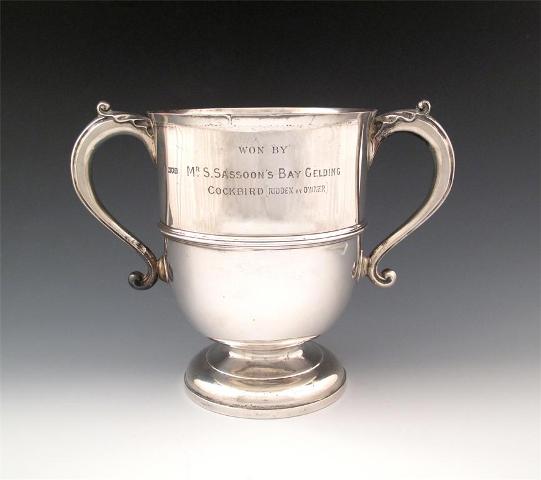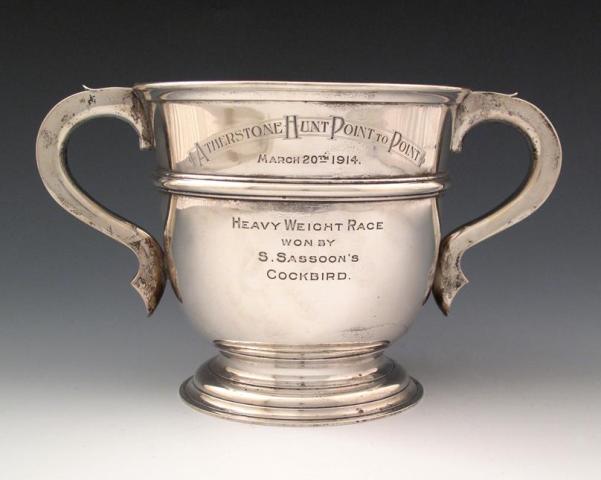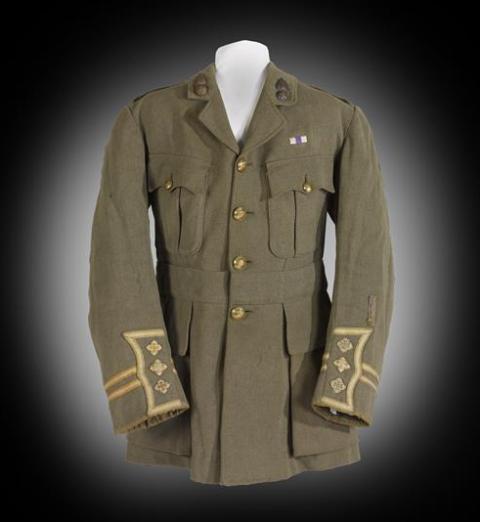Being an archivist, I naturally tend to think that the most effective way of understanding the life of a literary or historical figure will usually be through the documentary record. All the same, there’s no denying the fascination which can attach to objects closely associated with the person in question.
From time to time such artefacts do find their way into archives: it has been reported that the Humanities Research Center in Austin, Texas, preserves the pair of bed-socks in which the novelist Compton Mackenzie died, and here in the U.L. we keep the composer Sir Arthur Bliss’s Companion of Honour badge along with his papers. In October, a collection of items associated with Siegfried Sassoon will be offered for sale by the Salisbury auctioneers Woolley and Wallis (www.woolleyandwallis.co.uk). Although these objects fall outside the Library’s collecting policy, there are interesting links with documents on display in the ‘Dream Voices’ exhibition.
The second display case in the exhibition contains a notebook kept by Sassoon (MS Add. 9852/3/2) titled ‘Details of point-to-point races –1911–12–13–14–’. Sassoon turned to point-to-point racing in 1911, riding his newly-acquired horse Cockbird. The description in the Memoirs of a Fox-Hunting Man of George Sherston carrying off the Colonel’s Cup in the Ringwell Heavy Weight Race is based on Sassoon’s experience competing for the Southdown Heavy Weight Cup in April 1911, and the notebook is opened to show the account of this race. Compared with the fictionalised version, it gives a sparse factual record, noting that the event took place at Cooksbridge, was open to subscribers of fifteen guineas to the Southdown Foxhounds, and attracted ten entries. ‘Won easily’ was Sassoon’s laconic statement of the result.
The Salisbury sale will include the Southdown Heavy Weight Cup itself, inscribed with the names of the winning horse and rider.

Southdown Heavy Weight Cup, 1911. Image: Woolley and Wallis.
The inscription confirms what has to be surmised from the notebook, that the ‘b.g.’ given after Cockbird’s name stands for ‘bay gelding’. The 1911 Southdown was Sassoon’s first victory, in his third point-to-point, and he was sufficiently proud of the performance to have photographs taken of himself posing with Cockbird and the Cup, examples of which are reproduced in the biographies. Sassoon and Cockbird went on to win several more races, including the Atherstone Hunt Point to Point in March 1914, the trophy for which is also in the sale.

Atherstone Hunt Point to Point Cup, 1914. Image: Woolley and Wallis.
Perhaps the documents in the exhibition with the greatest associative power are the diaries and journals kept by Sassoon on active service: the small pocket notebooks he carried with him in France and Palestine. The Salisbury sale will include Sassoon’s Royal Welch Fusiliers service dress jacket, with Military Cross ribbon and Sassoon’s name inscribed on an inside label.

Sassoon's service dress jacket. Image: Woolley and Wallis.

Label inside Sassoon's service dress jacket. Image: Woolley and Wallis.
The sleeves show Sassoon’s rank as captain, and therefore in its current state the jacket cannot be earlier than 1918, but although there is no proof one way or another, it is easy to imagine one or more of the notebooks on display in the exhibition having at one time nestled in one of its breast pockets.
The sale, which will also include hunting costumes, and a candelabrum mentioned in one of Sassoon’s post-war poems, takes place on Wednesday 27 October.



